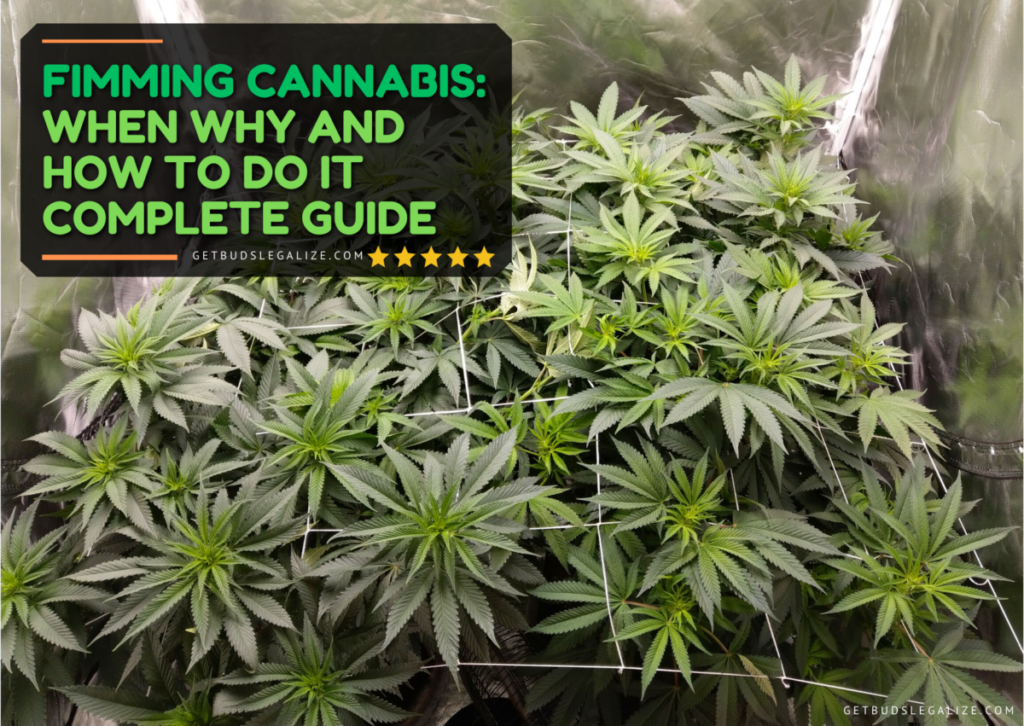Fimming Cannabis: When Why and How To Do It
If you are a cannabis grower who wants to maximize your yield and optimize your plant’s growth, you might have heard of fimming. Fim is a technique that involves cutting off the top of the main stem of a cannabis plant, just below the newest growth tip. This causes the plant to produce four new main colas instead of one, increasing the number of buds and the overall canopy size.
But what is the science behind fimming? How does it differ from other pruning methods like topping? And when and how should you fim your cannabis plants? In this complete guide, we will answer all these questions and more.
How Do Fimming Cannabis Work?
To understand how the fim technique works, we need to first understand how marijuana plants grow. Marijuana plants, like many other plants, exhibit a phenomenon called apical dominance. This means that the plant prioritizes the growth of the main stem and the highest branches over the lower ones. The main stem produces a hormone called auxin, which suppresses the growth of the lateral branches. This way, the plant can reach for more light and compete with other plants.
However, apical dominance also limits the potential yield of a marijuana plant. If you let your plant grow naturally, it will produce one main cola (the cluster of buds at the top of the stem) and several smaller ones on the lower branches. The main cola will receive more light and nutrients than the rest, resulting in bigger and denser buds. The lower buds, on the other hand, will be smaller and less potent due to less light exposure and airflow.
This is where pruning techniques like fimming come in handy. By cutting off the growth tip, you disrupt the production of auxin and break the apical dominance. This allows the lower branches to grow faster and catch up with the height of the main stem. The result is a more even canopy with multiple main colas that receive equal amounts of light and nutrients.
Cannabis Topping vs Fimming
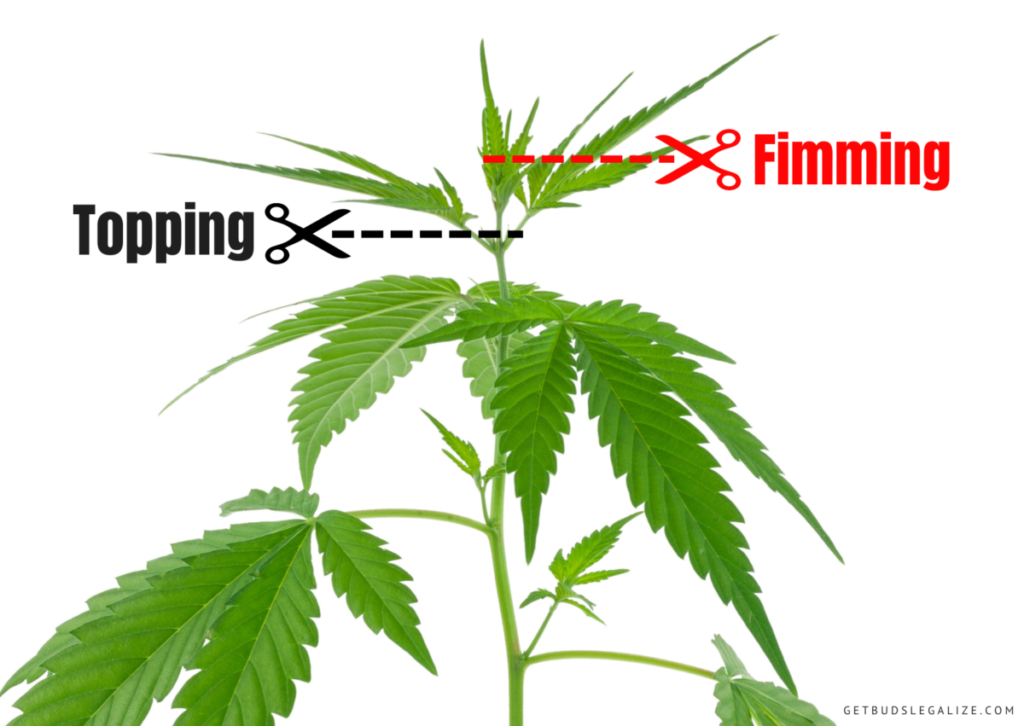
Fimming is not the only way to create multiple main colas on a plant of cannabis. Another popular method is topping, which involves cutting off the entire growth tip of the main stem. Topping also breaks the apical dominance and stimulates the growth of two new main colas from the nodes below the cut. So what are the differences between topping and fimming? And which one should you choose for your plants?
Here are some of the differences you should consider before choosing:
- Topping is more precise and easier to perform than fimming. You just need to cut off the entire growth tip above a node, leaving no stub behind. Fimming requires more accuracy and care, as you need to cut off about 75% of the growth tip, leaving a small portion intact.
- Fimming produces more main colas than topping. Topping usually results in two new main colas, while fimming can produce four or more. This means that fimming can create a larger canopy and potentially more buds than topping.
- Fimming is less stressful for the plant than topping. Topping creates a larger wound that takes longer to heal and exposes the plant to more risks of infection or pests. Fimming creates a smaller wound that heals faster and causes less shock to the plant.
- Topping allows for more control over the shape and structure of the plant than fimming. Topping creates two symmetrical branches that can be trained or manipulated easily. Fimming creates four or more asymmetrical branches that can grow in different directions and angles.
Ultimately, both are effective ways to increase your yield and optimize your plant’s growth. The best method for you depends on your personal preference, your growing space, your strain, and your experience level.
What Are the Benefits and Drawbacks of Fim Cannabis?
Some of the benefits of fimming cannabis are:
- Increasing the yield: Creates more colas, or clusters of buds, on each plant, which translates to more harvestable material.
- Improving the light distribution: Creates a more even and horizontal canopy, which allows more light to reach all parts of the plant, resulting in more uniform growth and bud development.
- Saving space: Reduces the height and width of each plant, which makes it easier to fit more plants in a limited space, or to grow them discreetly in a stealthy setup.
- Enhancing the quality: Reduces the dominance of the main cola, which encourages more resin production and potency in all buds.
Some of the drawbacks are:
- Delaying the growth: Slows down the growth of each plant for a few days or weeks, as it needs time to recover from the stress and heal the wound. This may extend the growing cycle and require more patience from the grower.
- Increasing the risk of infection: Creates an open wound on each plant, which exposes it to potential pathogens and pests. It is important to keep the growing environment clean and sterile and to monitor the plants for any signs of disease or infestation.
- Requiring more maintenance: Requires more attention and care from the grower, as it involves regular pruning and training of each plant. It also requires more nutrients and water to support the increased growth and metabolism of each plant.
When Should You Fim Your Cannabis Plants?
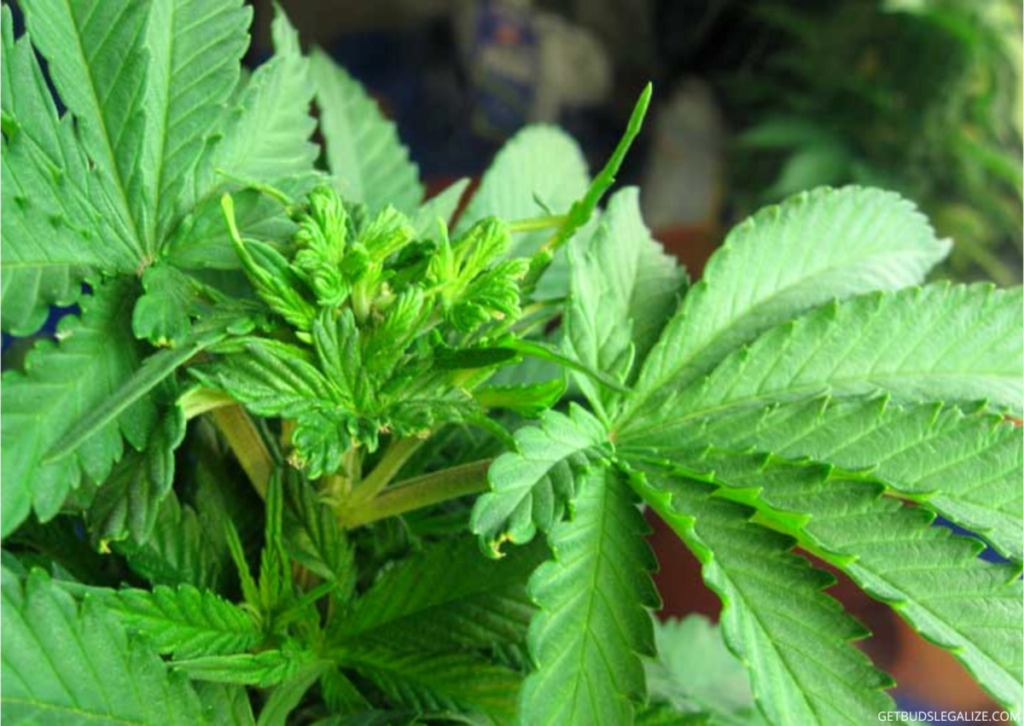

The best time to do it is during the vegetative stage when the plant is at least 3-4 weeks old and has at least four or five nodes, preferably before they reach the sixth node. This will give them enough time to recover from pruning and develop more branches and buds.
You should also do it when your plants are healthy and vigorous, not when they suffer from parasites, disease, nutrient deficiencies, or environmental stress. Fimming your plants when weak can do more harm than good and reduce their overall performance.
How Many Times Can You Fim a Plant?
The answer to this question depends on several factors, such as the type of plant, the stage of growth, the environment, and the skill of the gardener. Generally speaking, most plants can tolerate being fimmed once or twice during the vegetative stage, when they are growing rapidly and have enough time to recover.
Some plants can be fimmed more often, up to four or five times if they are healthy and vigorous. However, fimming too frequently or too late in the flowering stage can reduce the quality and quantity of the buds, as well as increase the risk of pests and diseases. Therefore, before you decide to fim your plant, you should consider the following factors:
- The stage of growth: Fim should be done during the vegetative stage when the plant is growing new leaves and branches. Fimming during the flowering stage can disrupt the hormonal balance and affect bud formation. The best time to fim is when the plant has at least four or five nodes (sets of leaves) on each stem or branch.
- The environment: Fim requires a stable and optimal environment for the plant to recover and thrive. This means providing enough light, water, nutrients, humidity, and airflow. Fimming in a stressful or unfavorable environment can weaken the plant and make it more susceptible to problems.
- The skill of the gardener: Fim requires precision and care to avoid damaging the plant or causing infections. You should use a sharp and sterile tool to cut off about 75% of the tip of the stem or branch, just above a node. You should also avoid fimming too many stems or branches at once, as this can shock the plant. You should monitor the plant closely after fimming and remove any dead or dying leaves or shoots.
How to Fim a Weed Plant Step-by-Step:
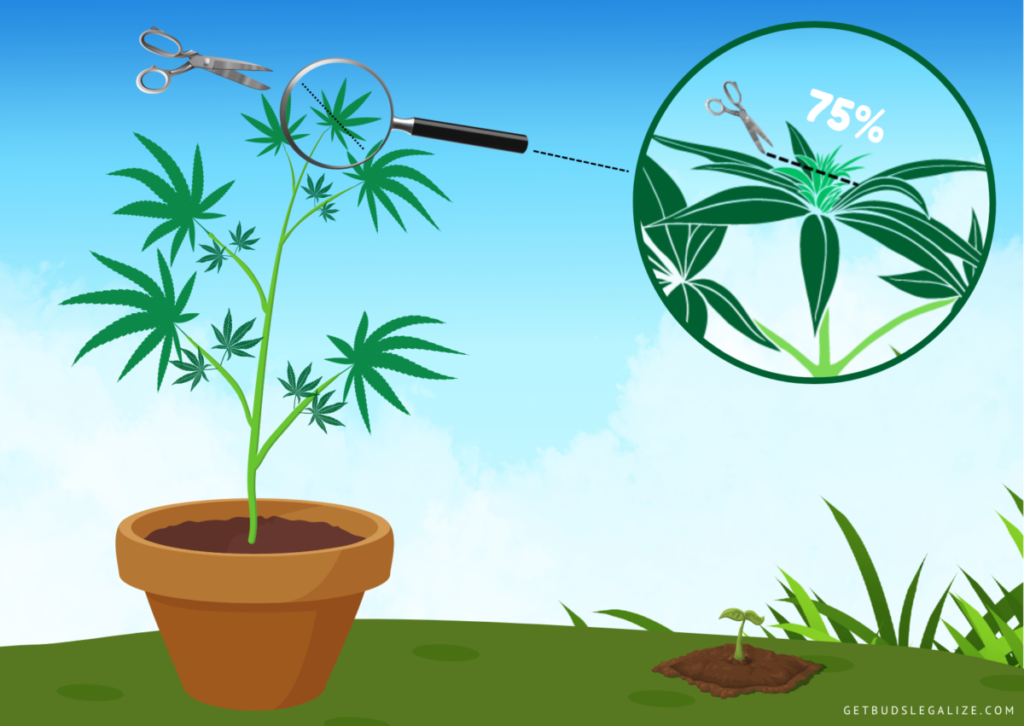
What You Need:
- A healthy cannabis plant that is at least 3-4 weeks old and has 3-5 nodes.
- A pair of sharp scissors or trimmers, or your fingers.
- A clean and sterile work area.
Procedure:
1. Select the topmost growth tip of your plant. This is the part where new leaves are forming and where the stem splits into two branches.
2. Gently pull the leaves back around the tip and take the tip between your fingers.
3. Using your scissors, trimmers, or fingers, carefully cut off 75-80% of the tip, leaving about 20% intact. This will allow it to heal and grow many new branches.
4. Repeat the technique on other growth tips you want to branch out. You can fim as many growth tips as you want, depending on how bushy you want your plant to be. However, you should avoid fimming too many tips at once, as this can stress and weaken your plant.
5. Wait for your plant to recover and produce new growths. This may take a few days depending on the strain and the health of your plant. You should see two to four new branches emerging from each fimmed site.
Fimming can produce 2-4 new branches per cut, which can increase your yield and create a bushier plant. However, fimming can also stress and damage your plant if done incorrectly or too late in the flowering stage. Therefore, you should fim your plant carefully and only when it is healthy and strong enough to recover. Fimming can also affect the height and shape of your plant, so you may need to adjust your lighting and training methods accordingly.
How to Tell If Fimming Worked?
The fimming results can be seen after a few days when new growths appear at the cut site. To tell if fimming has worked, look for four or more new stems emerging from the top of the plant. These stems will develop into new buds or clusters of buds, which will increase the plant’s harvest potential. If you only see two new growing tips, then you didn’t fim properly and topped instead.
Can You Combine Fim With Other Growing Techniques?
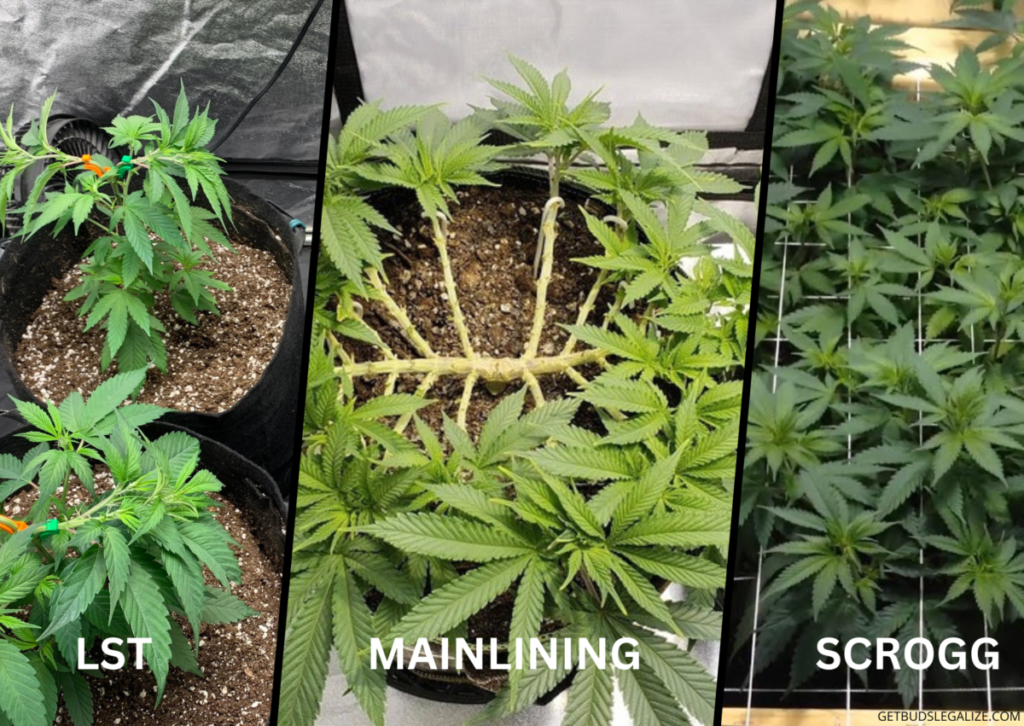
The answer is yes, you can combine fim with other techniques, but you need to be careful not to stress your plants too much or cause irreversible damage. Fim is a high-stress training method that requires some time for your plants to recover, so you should not fim them too often or too late in the vegetative stage.
Some of the techniques that work well with fimming are:
- Topping: This is similar to fimming, but it involves cutting off the entire top of a new shoot, which results in two main colas instead of four. You can alternate between topping and fimming to create multiple branches and bud sites on your plants.
- Mainlining: This is a technique that involves topping your plants multiple times and tying down the branches to create a symmetrical and flat canopy. You can fim the new shoots that emerge from the mainlined branches to increase the number of colas and create an even canopy.
- Scrogging: This is a technique that involves using a screen or a net to train your plants to grow horizontally and fill up the available space. You can fim your plants before placing them under the screen to encourage lateral growth and more bud sites.
- LST: This stands for low-stress training, and it involves bending and tying down your branches to expose more of them to light and create an even canopy. You can fim your plants before or after applying LST to create more branches and colas.
If you combine fimming with other techniques, make sure you give your plants enough time to recover and adjust to the changes.
Mistakes To Avoid When Fimming Cannabis
Here are some common mistakes to avoid:
• Fimming too early or too late: Fim should be done when the plant has at least 3-5 nodes, but not more than 8 nodes. Fimming too early can stunt the growth of the plant while fimming too late can reduce the flowering time and affect the quality of the buds.
• Fimming too much or too often: Fim should be done sparingly and selectively, depending on the size and shape of the plant. Fimming too much can weaken the plant, slow its growth and recovery, and make it more susceptible to pests and disease.
• Fimming with dirty or dull tools: Fim should be done with clean and sharp scissors or a razor blade, to make a clean and precise cut. Fimming with dirty or dull tools can cause infections and injuries to the plant, which can lead to rotting or wilting.
• Fimming without proper care: Fim should be followed by proper plant care and maintenance, such as watering, feeding, pruning, and support. Fimming without proper care can stress the plant and reduce its health and vigor.
Conclusion
In conclusion, fimming cannabis is a useful plant training technique that can increase the yield and quality of your plants, but it should be done with caution and moderation. You should only fim your plant if it is suitable, if it is in the right stage of growth if it is in a good environment, and if you know how to do it correctly. You should also limit the number of times you do it to avoid overloading her and affecting her health.
FAQs about Fimming Cannabis
Topping is a high-stress training technique that involves cutting off the top part of the plant during its vegetative phase. This stimulates the growth of more side branches and colas, which can increase the yield and quality of the buds. topping cannabis plants should be done when the plant has at least six nodes, and only on healthy plants that can recover from the stress. Topping can be repeated multiple times to create a bushy plant with many bud sites, but it should be avoided during flowering, as it can reduce the harvest and potency.
Fim is a pruning method that aims to increase the yield of your plants by creating more bud sites. It involves cutting off about 80% of the newest growth on your plants, leaving behind four stems that will grow into new branches.
Fimming and scrogging are two techniques that can be used to increase the yield of your plants. Fimming involves cutting off the top of the main stem, which stimulates the growth of four new shoots instead of two. Scrogging involves placing a screen over the plants and weaving the branches through it, which creates a flat canopy and exposes more buds to light. Fimming and scrogging can be used together to create a dense and productive crop of cannabis.
The term fimming comes from the acronym FIM, which stands for “fuck, I missed”, because it was originally a mistake made by a grower who tried to top a plant but missed the stem.
Fimming is a pruning technique that involves cutting off the top of a plant of cannabis to encourage the growth of multiple branches and buds. However, not all strains are suitable for fimming. Some strains, such as indica-dominant ones, have a short flowering time and a compact structure, which makes fimming less effective and more stressful for the plant.
On the other hand, some strains, such as sativa-dominant ones, have a long flowering time and a stretchy structure, which makes this technique more beneficial and less harmful for the plant. Therefore, before fimming your plants, you should consider the characteristics of your strain and how it will respond to this technique.
Fimming is a technique of cutting off the top of a shoot to stimulate the growth of four new shoots instead of two. This technique can be done on any branch, but some cannabis growers prefer to do it on the main stem only. The advantages and disadvantages brought to the side branches depend on several factors, such as the variety, the environment, and the goal of the grower.
Filming side branches can help create a more uniform canopy and increase bud count, but it can also reduce yield and bud quality on those branches. Side branches may also require more maintenance and training to avoid overcrowding and shading. Therefore, this is not a one-size-fits-all solution, but rather a personal choice and a matter of trial and error.
Fimming is often used by indoor growers who want to control the size and shape of their plants, but it can also work well for outdoor cultivation. Here are some benefits of fimming outdoor plants:
- Reduced height: Fimming can help you keep your plants shorter and more discreet, which can be useful if you want to avoid unwanted attention or comply with legal limits.
- Improved stability: Fimming can make your plants sturdier and more balanced, which can protect them from strong winds and heavy rains that might damage or topple them.
- Enhanced light exposure: Fimming can increase the surface area of your plants, allowing more leaves to receive direct sunlight. This can boost photosynthesis and energy production, leading to bigger and better buds.
- Increased yield potential: Fimming can multiply the number of colas on your plants, which means more sites for bud formation. This can result in higher yields per plant.
Fimming isn’t hard to do, but it does require skill and timing. If you want to learn more about fimming and growing marijuana techniques, check out our blog post on how to maximize the yield of your crops.
Fimming and topping are two techniques that can help you improve the yield and shape of your autoflowering cannabis plants. However, they are not suitable for all strains and situations. Here is a brief comparison of the pros and cons of each method.
Fimming is when you cut off about 75% of the main stem’s tip, leaving a small part intact. This stimulates the plant to produce four new main colas instead of one, creating a bushier and more compact structure. Fimming is less stressful than topping, but it also takes longer for the plant to recover and resume vertical growth.
Topping is when you completely remove the main stem’s tip, allowing two side branches to become the new main colas. Topping can help you control the height of your plant and create a more even canopy. However, topping is more stressful than fimming and can slow down the growth of your plant significantly.
Both fimming and topping are high-stress training techniques that should be done carefully and only on healthy plants. They are also not recommended for autoflowering strains that have a short vegetative phase or a fast flowering time, as they may not have enough time to recover and produce enough buds.

